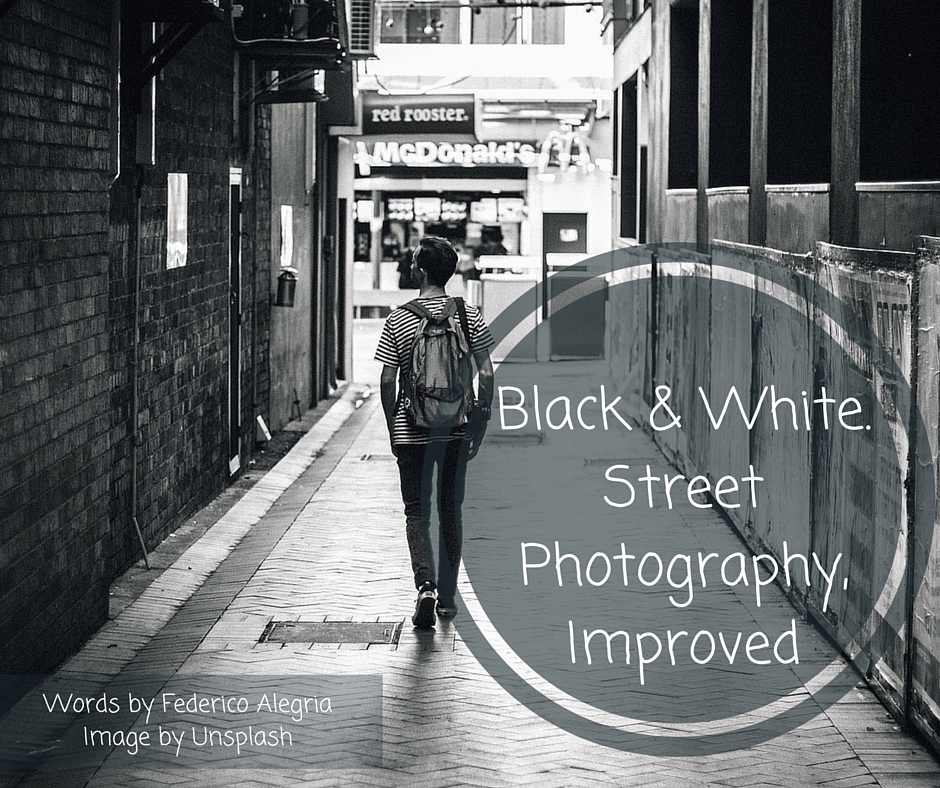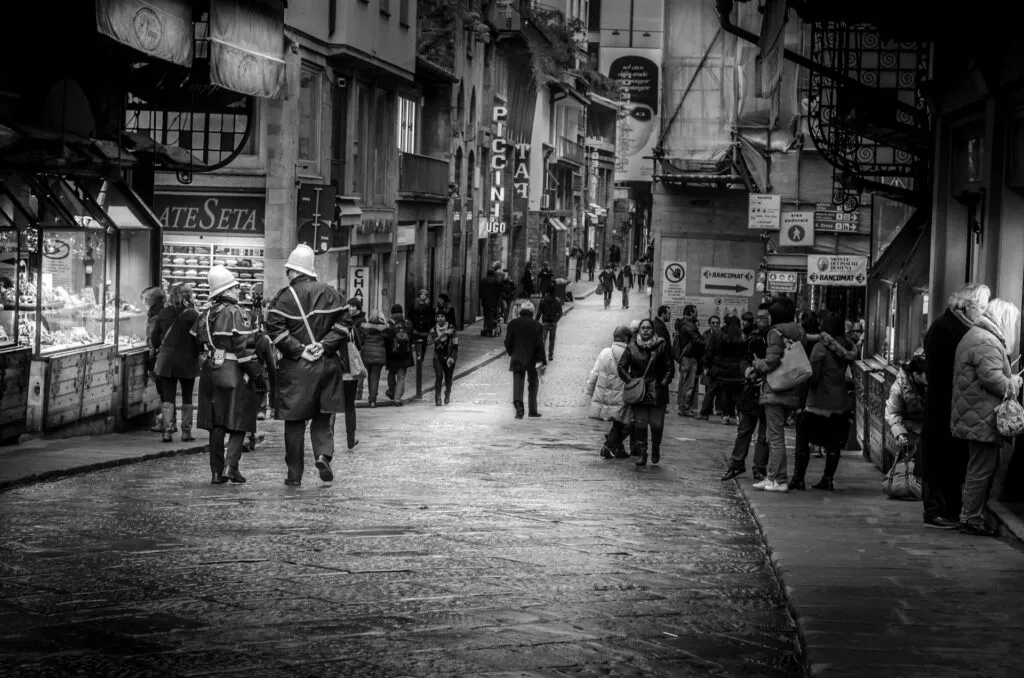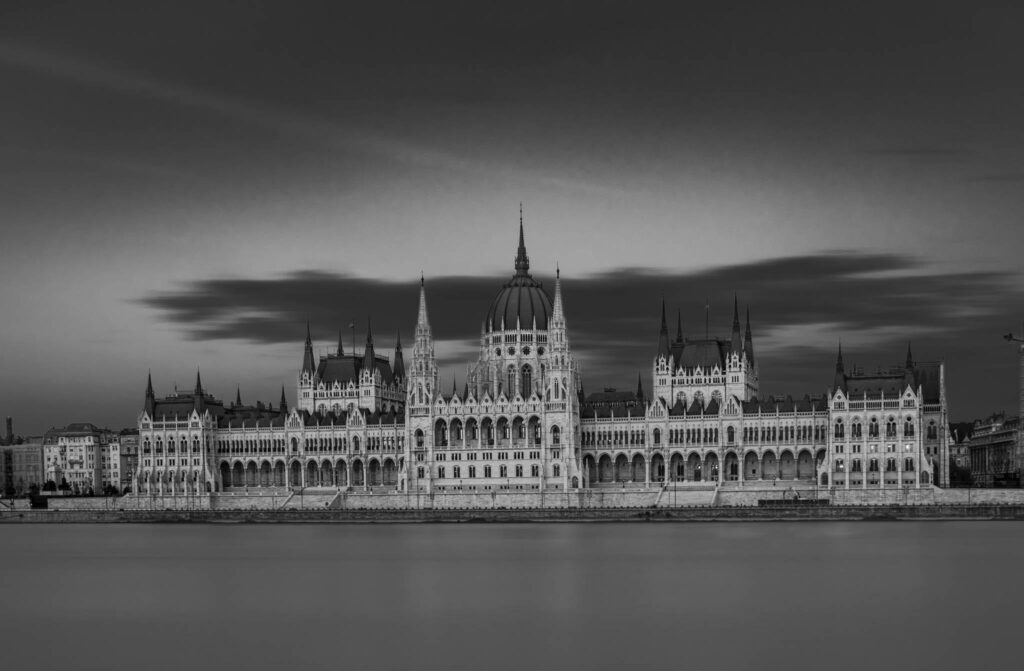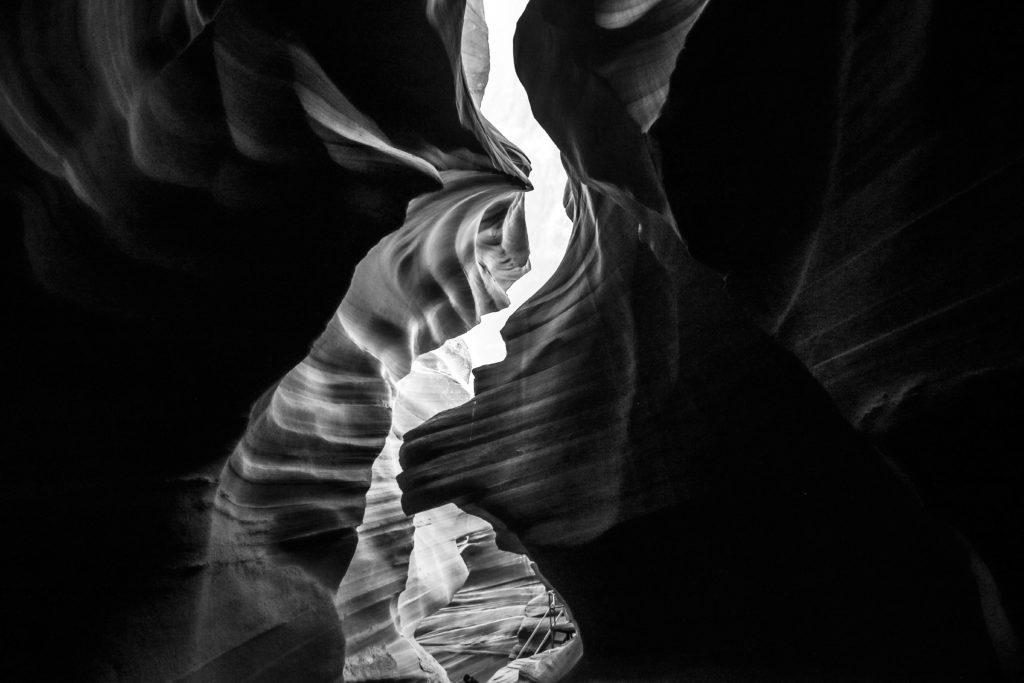
Let's talk a bit about a hot topic in street photography. Historically, the use of black and white for street photography has been well accepted, perhaps because black and white has had a longer life or existence?
Many truly memorable street photographs have been taken in color, no doubt, and some great masters, like William Eggleston and Saul Leiter, have turned to color and made it their signature.
For me and many other street photographers, there are no rules. There’s a beautiful mock term for people who try to fit street photography into a box: they’re called “Street Photography Police.” But while there are no rules per se, it's always important to consider basic aesthetical elements like composition.

You may like to take candid frames, or the “approaching stranger” angle. It doesn't matter – but it's usually the case that the meaning or message of a photograph (especially a street photo) can be enhanced, or focused, in a monochromatic version of the image.
You Can't Always Have Control Of The Elements
When you’re wandering the streets with your camera in hand, seeking moments that need to be preserved in time, you’ll often find that the elements in the shot don’t play along very well. This happens with color shots in particular. Streets are full of colors that tend to be in disorder and that don’t follow any specific color-theory logic.
Imagine you have a great picture in your hands, but the message is still not developed to its full potential. This is what is sometimes called “color distraction” in street photography.
By suppressing the color in a monochromatic file, you eventually realize that the message in the image is stronger in black and white than it is in color. This happens thanks to the fraction-of-a-second gain in time you achieve by presenting the message, or history, without the distraction of color.

Placing The Emphasis On Shape
Black and white photography doesn’t involve only selecting aesthetics features for an image, it actually helps you gain definition through shapes. Shape is a characteristic feature of all forms of monochrome photography, but let’s stick to street photography.
Let’s talk about the simplest way to look at shapes: silhouettes, which are always more quickly understood in black and white. It could be a person walking in front of a large light source, like the entrance of a chapel or some architectonic detail that you think may be a good sidebar for a street-photography essay.
If we get techy, silhouettes force the camera to distinguish between information in a very dark spot and the blown-out highlights that surround it. This is a great opportunity for chromatic aberrations to appear, because the limit between black and white borders is so dramatic that the camera may produce artifacts of some sort, no matter which camera or lens you use.
Some gear is more capable of minimizing these aberrations thanks to the high dynamic tonal range their sensors capture – still, there is a chance they can form. These aberrations are something that have so little presence in black and white photography that it would be unnoticeable.

Now that we're getting stuck into this Black & White idea, you must check out this truly amazing Black & White Photography guide by Kent DuFault “Better Black & White” – really improve both your abilities and understanding of using monochrome images to create impactful images!
Street Photography Helps To Structure Elements
Structure refers to the geometric quality of the elements inside an image. Because street photography happens inside complex contexts, a lot of structural elements can enter the final composition. Image situations with high structural potential include lines that are almost always enhanced by some sort of contrast.
Extended Range Of Contrast, Without A Weird Look
In the early days of film, choosing black and white film was something you had to think about in advance. Nowadays, thanks to modern technology, you can choose either color or black and white after you press the shutter button.
You make the color vs. black and white decision in post-processing. The main reason you shouldn’t shoot in a monochromatic mode is because cameras make this conversion by desaturating the color image.
Only sensors that have been built or hacked to capture light and actually see in black and white can get you close to a real black and white image. When you shoot in RAW format, your file will be rendered in color, because that’s how RAW has been engineered.

When you manipulate RAW’s 8 channels of color, you enhance the contrast of the image without touching the contrast button in your preferred image-editing software.
In the film era, a huge selection of filters could do this job when the picture was taken. The most common were ones that blocked red, blue or yellow light, giving the image a darker tone. You don’t have to use these filters anymore; this is one of the benefits of a digital workflow. You choose the contrast by sliding the colors in the 8-channel panel of your RAW editing software.
Back to digital … when you work the contrast out of a color image, the “normal” contrast range is much narrower than it is in black and white. This is simply because it affects the saturation, and if you start reducing saturation, you end up with plastered colors like pastels.
That’s something you don’t want when you’re trying to capture the reality of street life.

My Thoughts About Street Photography
Street photography and social documentary photography have much in common. Both try to represent reality in its truest way. And both can be enhanced with a monochromatic decision when it comes to the final deployment of the image.
This is odd because you are subtracting one of reality’s most iconic features – color – in order to reinforce a message, statement, or idea. But you do it to make a deeper impact on the viewer's mind, and not just employ some sort of aesthetic gimmick.
Before leaving, you must check out this truly amazing Black & White Photography guide by Kent DuFault “Better Black & White” in order to really improve both your abilities and understanding of using monochrome images to create impactful images!
Further Resources
- Do You Make This Classic Mistake in Black and White Post Processing? by Christopher O'Donnell
- 7 Things You Really Don’t Need For Street Photography by Federico Alegria
- 4 Practical Solutions for Better Street Photography by Jason D. Little






